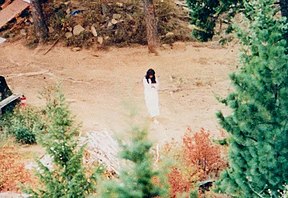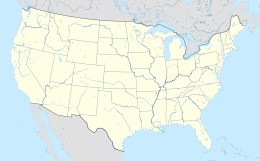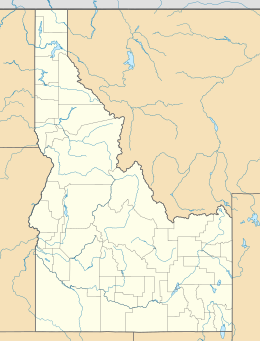
Back Ruby Ridge German Ruby Ridge Esperanto Asedio de Ruby Ridge Spanish Ruby Ridge French 루비능선 대치 Korean Ruby Ridge-beleiringen NB Ruby Ridge Polish Ruby Ridge Portuguese Инцидент в Руби-Ридж Russian Ruby Ridge SIMPLE
| Ruby Ridge standoff | |||
|---|---|---|---|
Vicki Weaver as seen from a USMS surveillance position USMS surveillance photo showing Samuel Weaver (right), Kevin Harris (center), Sara Weaver (left) Both photos taken on August 21, 1992 | |||
| Date | August 21–31, 1992 | ||
| Location | Near Naples, Idaho 48°37′14″N 116°25′59″W / 48.62056°N 116.43306°W | ||
| Caused by | Resistance to USMS actions taken while serving a bench warrant for Randy Weaver; FBI actions taken following shooting death of a U.S. Marshal, statements by Weaver, and shots allegedly fired at a news helicopter | ||
| Resulted in | Deaths of Deputy U.S. Marshal W. F. Degan, Samuel Weaver (juvenile), Vicki Weaver, and Striker (dog); prosecution of Randy Weaver and Kevin Harris (later acquitted); civil suits against the US | ||
| Parties | |||
| |||
| Casualties and losses | |||
| |||
Location in the United States Location in Idaho | |||
Ruby Ridge was the site of a siege of a cabin occupied by the Weaver family in Boundary County, Idaho, in August 1992. On August 21, deputies of the United States Marshals Service (USMS) came to arrest Randy Weaver under a bench warrant after his failure to appear on federal firearms charges.
During a surveillance operation, officer Art Roderick shot Weaver's dog when it ran at them and then pointed his rifle at Weaver's son, Samuel, who was armed. Samuel fired back at the marshals, and was shot and killed by the team. In the ensuing exchange of fire, Weaver's friend Kevin Harris shot and killed Deputy Marshal William Francis Degan. Weaver, Harris, and members of Weaver's immediate family refused to surrender. The Hostage Rescue Team of the Federal Bureau of Investigation (FBI HRT) became involved as the siege was mounted.[1] In the standoff, FBI sniper Lon Horiuchi shot Weaver, then shot Harris, but the second shot also hit and killed Weaver's wife Vicki. The conflict was ultimately resolved by civilian negotiators, and Weaver's old military acquaintance had to convince him to surrender. Harris surrendered and was arrested on August 30; Weaver and his three daughters surrendered the next day.
Extensive litigation followed. Initially, Randy Weaver and Harris were tried on a variety of federal criminal charges, including first-degree murder for the death of Degan. In the successful defense, Weaver's attorney Gerry Spence accused the agencies that were involved of criminal wrongdoing, in particular the FBI, the USMS, the Bureau of Alcohol, Tobacco, and Firearms (ATF), and the United States Attorney's Office (USAO) for Idaho. Harris and Weaver were acquitted of all the siege-related charges, and Weaver was only found guilty of violating his bail terms and of failing to appear for a court hearing, both related to the original federal firearms charges.[2][3][page needed] The Weaver family and Harris both filed civil suits against the federal government in response to the firefight and the siege. In August 1995, the Weavers won a combined out-of-court settlement of $3.1 million; Harris was awarded a $380,000 settlement in September 2000. In 1997, a Boundary County prosecutor indicted Horiuchi for the manslaughter of Vicki, but the county's new prosecutor controversially closed the case, judging that he would be unlikely to secure a conviction.[4][5]
The behavior of federal agents during these events drew intense scrutiny. At the end of Weaver's trial, the Department of Justice's Office of Professional Responsibility formed the Ruby Ridge Task Force (RRTF) in an attempt to investigate Spence's charges; their report raised questions about all of the participating agencies' conduct and policies. Another inquiry was led by the Senate Subcommittee on Terrorism, Technology, and Government Information, which held hearings between September 6 and October 19, 1995. It issued a report in which it called for reforms in federal law enforcement in an attempt to prevent a repeat of the losses of life at Ruby Ridge and to restore the public's confidence.[6] Several documentaries and books were produced on the siege. The law enforcement's response at Ruby Ridge and during the Waco siege roughly six months later were both cited by Timothy McVeigh as his motivation to carry out the Oklahoma City bombing with Terry Nichols.[7]
- ^ "Ruby Ridge | History, Facts, Aftermath, & Map | Britannica".
- ^ "18 Months in Jail for White Supremacist". The New York Times. October 19, 1993. Retrieved July 22, 2017.
- ^ Cite error: The named reference
Walter02was invoked but never defined (see the help page). - ^ Verhovek, Sam Howe (June 15, 2001). "F.B.I. Agent to Be Spared Prosecution in Shooting". The New York Times. Retrieved September 4, 2010.
- ^ Idaho v. Horiuchi, 266 (9th Cir. June 5, 2001).
- ^ "Opening Statement of Louis J. Freeh, Director Federal Bureau of Investigation". fas.org. October 19, 1995. Retrieved July 22, 2017.
- ^ Niebuhr, Gustav (April 26, 1995). "Terror in Oklahoma: Religion; Assault on Waco Sect Fuels Extremists' Rage". The New York Times. Archived from the original on August 18, 2018. Retrieved August 18, 2018.
© MMXXIII Rich X Search. We shall prevail. All rights reserved. Rich X Search



